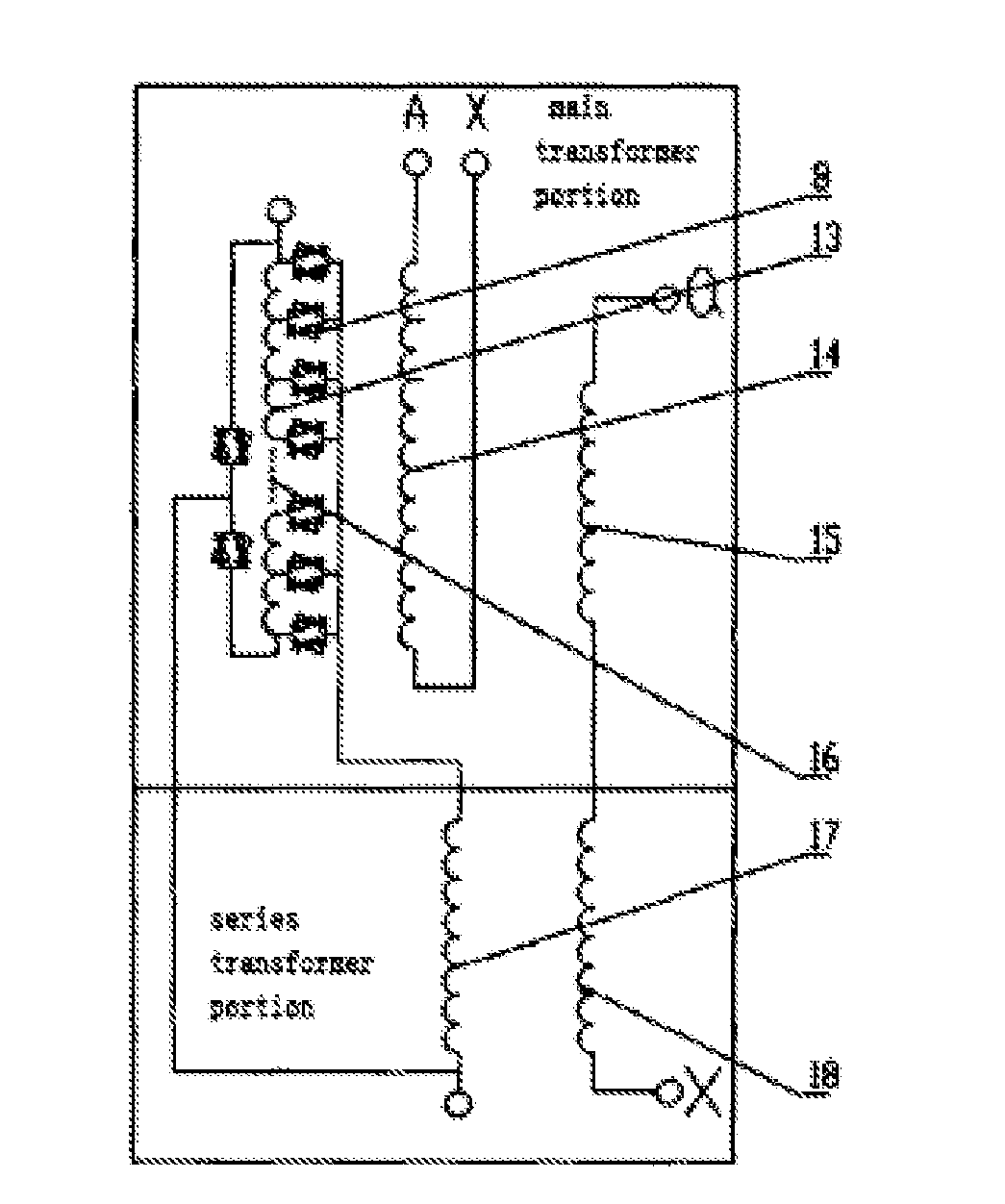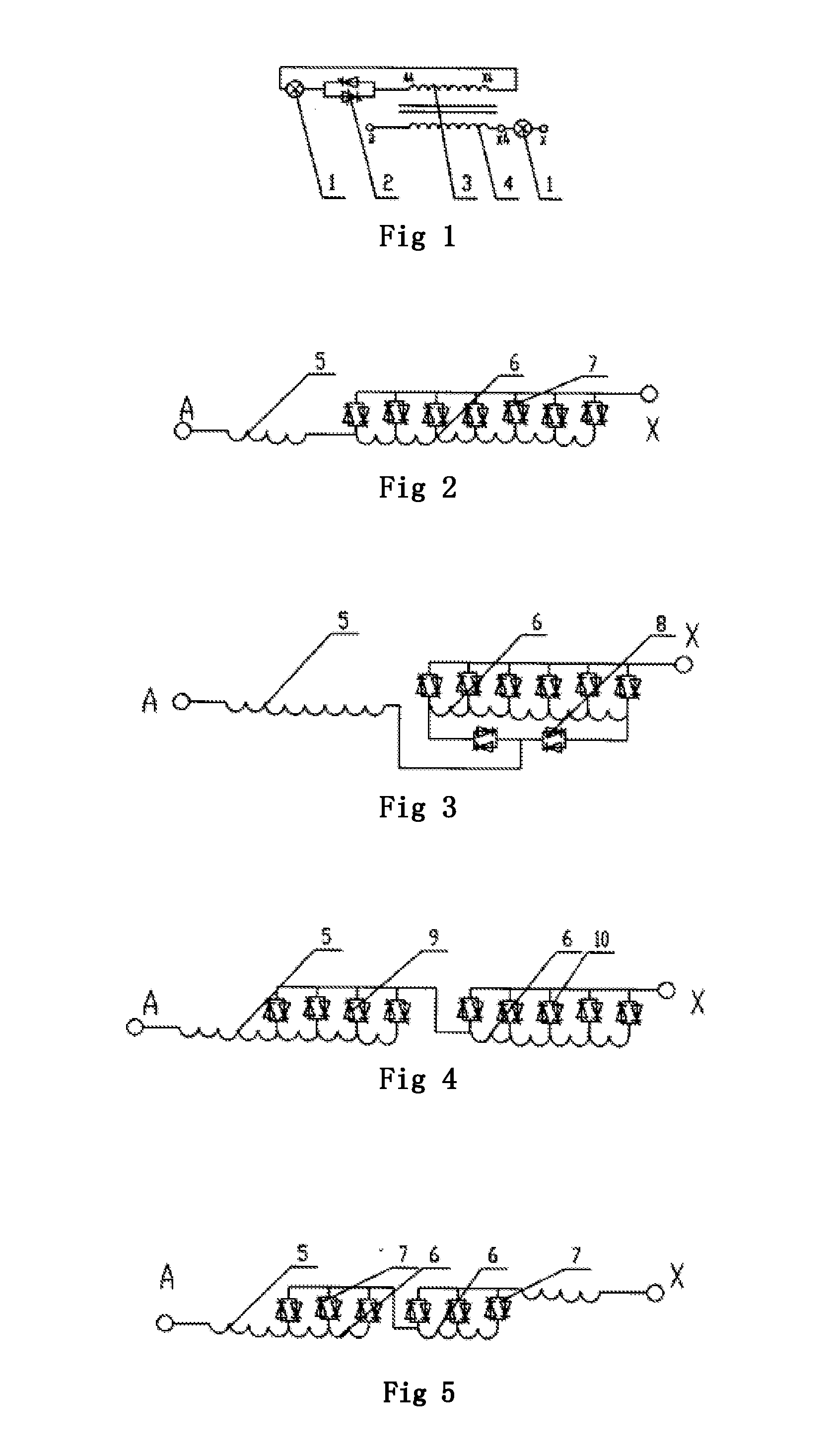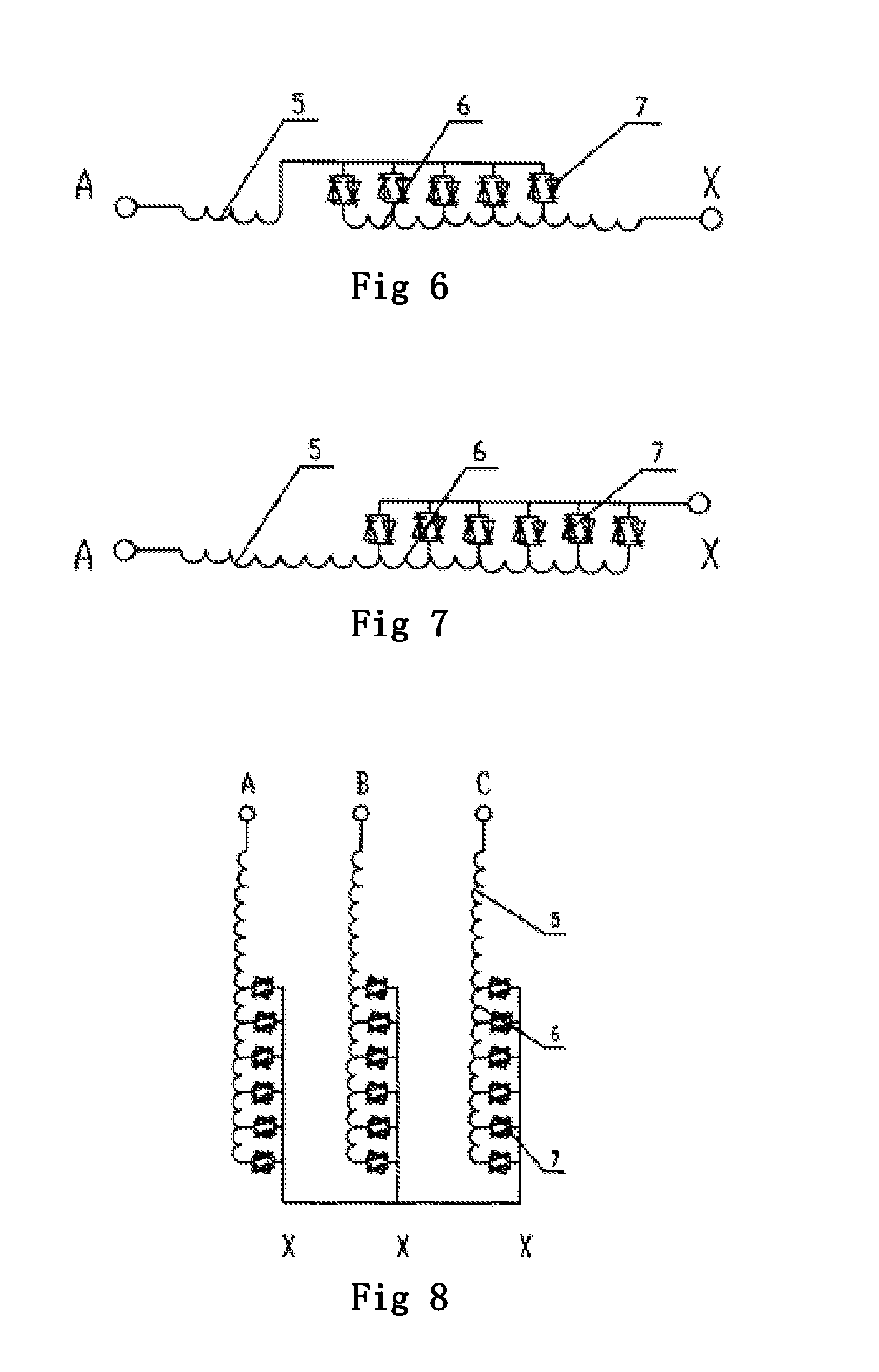Transient impedance transformer based on ac voltage regulating electronic switch
- Summary
- Abstract
- Description
- Claims
- Application Information
AI Technical Summary
Benefits of technology
Problems solved by technology
Method used
Image
Examples
example 1
[0157]In the present solution, the AC voltage regulating electronic switch is not used, but a new AC voltage regulator is used, which is aimed at showing the capability of voltage regulation of the AC voltage regulator under extreme cases. A furnace, resistance-inductive load, is provided, when the distance from the electrode to the burden surface is determined, the maximal and minimal output voltages of the series voltage regulating transformer is required to be between 1 and 0.7, respectively.
[0158]A furnace transformer, three phases, is provided, and a series voltage regulating transformer, with range of voltage regulation of 30% and positive voltage regulation, is also provided, the main transformer and the series transformer are of an Yd11 connection group. The output constant voltage at lower voltage of the main transformer is U1=0.7, and the highest output voltage at lower voltage of the series transformer is U2=0.3. The high voltage and current of the series transformer can ...
example 2
[0161]A furnace transformer with range of voltage regulation of 40%, reversing change-over voltage regulating, Yd11 connection group, and a series voltage regulating transformer are provided. The secondary winding of the main transformer is connected, in parallel, to the capacitor group to adjust the power factor. Before compensation, cos φ=0.8, it is required that after compensation, cos φ=0.95. The principle of electrical wiring is showed by the combination form of the low-voltage winding and the reactive compensation device, as showed in FIG. 16. U21 and U22 are secondary voltages of the main transformer, and series transformer, respectively, and the leakage reactance of the transformer is omitted. FIG. 17 is a vectogram showing the current before compensation. Before compensation, the power factor is defined as cos φ=0.8, sin φ=0.6, and meanwhile, the working current of the furnace IL=1. The active component of the working current is IR=0.8. The idle component of the working cur...
example 3
[0167]A furnace transformer with range of voltage regulation of 40%, reversing change-over voltage regulating, Yd11 connection group, and a series voltage regulating transformer are provided. The low voltage of the main transformer is 0.8, the low voltage of the series transformer is 0˜0.2, the combined voltage of the main and series transformers is 0.8±(0˜0.2), with 21 levels of voltage regulation, each of which is 0.02, the capacity of the main transformer is 0.4˜1, and the tolerance of each level of the main transformer is 0.03. It is assumed that the ratio of transformation is 1, and the resistance values of the two windings of the low-voltage main and series transformers are the same. It is assumed that the working current of the furnace after compensation is still IL=1, and the current of the secondary winding of the main transformer is I21=0.842, and the no-load loss is about of 15% of the load loss.
[0168]As showed in Example 2: loss of the transformer Pk is
Pk=(0.842 IL)2×0.8...
PUM
 Login to View More
Login to View More Abstract
Description
Claims
Application Information
 Login to View More
Login to View More - R&D
- Intellectual Property
- Life Sciences
- Materials
- Tech Scout
- Unparalleled Data Quality
- Higher Quality Content
- 60% Fewer Hallucinations
Browse by: Latest US Patents, China's latest patents, Technical Efficacy Thesaurus, Application Domain, Technology Topic, Popular Technical Reports.
© 2025 PatSnap. All rights reserved.Legal|Privacy policy|Modern Slavery Act Transparency Statement|Sitemap|About US| Contact US: help@patsnap.com



